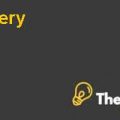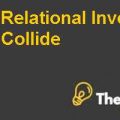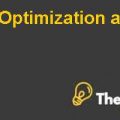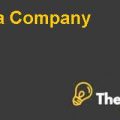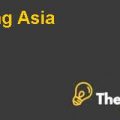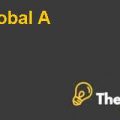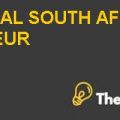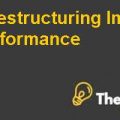
Millennium Pharmaceuticals Inc. (A)
Question 01: Describe the characteristics of the leadership and organizational management of Millennium that enabled the company to succeed.
Millennium Pharmaceuticals was lead by CEO and founder Mark Levin. He was an influential personality and his concept to run Millennium Pharmaceuticals proved to be unique and strange; hence the extensive executive search came to the conclusion that only Mark Levin can head such a different concept in the company. According to one of his former colleague, Levin “has tremendous vision for what is looming out there. According to him, for some of the people such elements are hidden in the fog bank, but for Mark Levin, he actually finds out the disconnected pieces and just joins them together”. Another unique aspect of his leadership was the office culture within Millennium Pharmaceuticals that was quite informal and causal. Levin often appeared in loud Hawaiian shirts and was quite a casual person where he took family outings at local horse race tracks; he would also appear at Millennium Halloween parties in drag. Recently he was seen with his daughter and wife in tow, dressed as a French maid in a low cut dress. Levin had a large collection of colorful shoes, which also included zebra patterned, adorned investor publications too.
Basically Levin had all the characteristics of a genuine leader. Which includes empathy, consistency, honesty towards work and with employees, direction, communication, flexibility and conviction to motivate employees. Levin had the vision and the consistency which made Millennium Pharmaceuticals grow the way it did in such short span of time. All was basically based on the leadership of the company, which was keen and committed to serve the customers with newer technology and at the same time make the employees and the workforce to remain motivated in working towards making the company grow rapidly. Conviction was the key element in Levin’s leadership because he had the vision for the future and knew exactly how to carry forward with the company. He was really honest and committed to make the company grow at a rapid pace for which not only did he made steps to acquire new firms and develop alliances but in fact he made sure that the employees grew along with the organization. The communication of the organization was quite effective; although the structure was de-centralized but each employee was given complete information regarding the client’s requirements and customers so that the customer satisfaction was obtained. Levin was quite unique when it came to directing the employees; he made sure that he had the right human resource to cater certain requirements. Therefore while hiring employees within the company, the employees or the candidates had to go through a rigorous interview session.
The company did not have any formal organizational structure or chart and was not making things complicated by formalizing them. However, several divisions were started and subsidized by Millennium management over time. Basically by late 1990s, Millennium saw itself as a family of different groups that were working to achieve a common goal which was to develop expertise in genomes as well as revolutionizing drug development in the industry. The company had excelled and developed itself in such a short time span without developing a formal plan; Millennium had actually found the path to achieve prosperity and growth. The company had remained focused right from the beginning to become a genomics firm while also helping to revolutionize the drug development process as a whole. He was basically seen as the driving force in the company where every employee liked working under him. The corporate culture of the company was quite friendly and normal and in spite of more than 800 employees; there was no internal politics.
The main reason for such a healthy environment was the leadership of the management at Millennium Pharmaceuticals. All employees hired at the company were interviewed about twelve times before they were hired. During the initial phase, the management indentified the intelligence and drived it to become a part of the job. After that employees werere-interviewed six times to find out the personality of each and every employee. This was the main reason for the success of the company and its effective leadership which had actually managed to develop a healthy and formal corporate culture.
As the case states, in spite of having a workforce of around 800 employees still there was no major politics within the organization and each and every employee was ready to help others. In fact, the key to prosperous employee in the company was mainly because there was no internal politics in the management and low key approach was adopted by the leaders to run the business. During meetings, Levin quite often remained in the background, speaking primarily which made the discussion to go off track. Levin’s office was quite modest with wall-mounted shelves, which underlined the flat structure of the organization.
Not only Levin himself was an inspirational leader but in fact he had the team that was competent and charismatic. Chief Business Officer, Steven Holtzman and Chief Technical Officer Michael Pavia were a part of the planning of Millennium Pharmaceuticals. The three of the top leaders in the management were hard working and usually arrived office before time. This actually motivated other employees to show up early at the office. However, according to a survey by the Human Resource Department of Millennium Pharmaceuticals in March 1999 showed high employee satisfaction among most of the employees but the lowest scored were taken by workload, stress and managing expectations. Employees though loved their jobs and...................
This is just a sample partial case solution. Please place the order on the website to order your own originally done case solution.
Focuses on strategies to grow and revolutionize the Millennium drug development through the use of new technologies, such as genomics. Describes how Millennium Pharmaceuticals - a fast-growing biotech company in Cambridge, MA - use strategic alliances to finance the development of technology platforms based on the latest achievements in the field of genomics. As a company considers developing pharmaceutical products themselves, they face a number of problems: 1) Can they revolutionize drug development, making it more predictable, faster and cheaper? 2) How should they choose their unions that they are closer to becoming a pharmaceutical company, and continues to attract the funding needed for their strategies? 3) How can they continue to grow rapidly and attract and retain some of the best minds in the pharmaceutical industry? "Hide
by Stefan Thomke, Ashok Nimgade Source: Harvard Business School 24 pages. Publication Date: December 21, 1999. Prod. #: 600038-PDF-ENG

